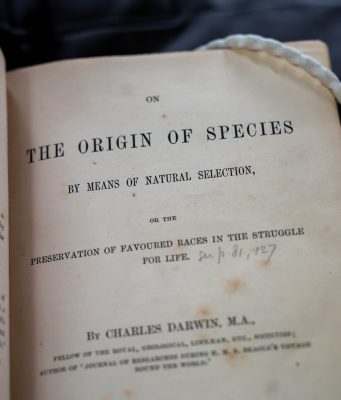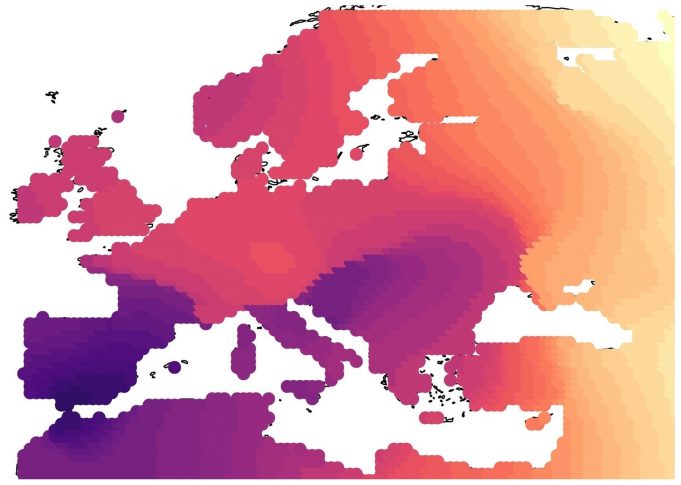Eagle talons are regarded as the first elements used to make jewellery by Neanderthals, a practice which spread around Southern Europe about 120,000 to 40,000 years ago. Now, for the first time, researchers found evidence of the ornamental uses...
Small populations, inbreeding, and random demographic fluctuations could have been enough to cause Neanderthal extinction, according to a study published November 27, 2019 in the open-access journal PLOS ONE by Krist Vaesen from Eindhoven University of Technology, the Netherlands, and colleagues.
Paleoanthropologists...
When Jaime Yazzie began planning her research for her forestry thesis, her adviser asked her what species of trees she wanted to save. They would use a computer simulation to measure the effects of a warming, drying environment, and...
Homo erectus, one of modern humans' direct ancestors, was a wandering bunch. After the species dispersed from Africa about two million years ago, it colonized the ancient world, which included Asia and possibly Europe.
But about 400,000 years ago, Homo erectus essentially...
Separate skeletons suggested to be from different early hominin species are, in fact, from the same species, a team of anthropologists has concluded in a comprehensive analysis of remains first discovered a decade ago.
The research appears in a special...
The names may vary—medicine man, witch doctor, holy man, prophet—but the notion of the shaman, someone who uses trance to commune with the supernatural and effect real-world change, is one that crosses virtually all cultural boundaries.
The question of why...
Father loss is clearly associated with cellular function as estimated by telomere length: any father loss between birth and 9 years of age leads to a reduction in telomere length, and the effect is greatest for children whose fathers...
This image shows cone photoreceptors (green) in a slice from a mouse retina. A majority of the photoreceptors (97%) in the retina are rods (black). The black layer on top of the photoreceptors is retinal pigment epithelium.Credit: Jung-Woong Kim
Early...
Neolithic populations have long been credited with bringing about a revolution in farming practices across Europe. However, a new study suggests it was not until the Bronze Age several millennia later that human activity led to significant changes to...
A meat-eating dinosaur species (Majungasaurus) that lived in Madagascar some 70 million years ago replaced all its teeth every couple of months or so, as reported in a new study published today in the open-access journal PLOS ONE, surprising even...
Reid Ferring, a professor in the University of North Texas Department of Geography and the Environment, is part of an international team of scientists who have developed a breakthrough method of identifying the sex and species of animal in...


















